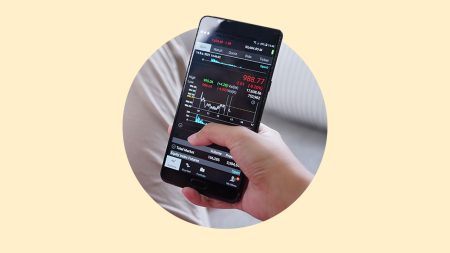Key takeaways
- Bond ETFs give investors convenient exposure to the bond market by providing immediate diversification, regular income payouts, and easy trading.
- Some notable drawbacks to bond ETFs include expense ratios that diminish returns, interest rate sensitivity and no guarantee of principal.
- Bond ETFs have lower minimum investment requirements and better tax efficiency than mutual funds.
Bond ETFs are a welcome addition to the range of funds that investors have at their disposal in building a portfolio. These exchange-traded funds bring a lot of benefits, and while they solve many pain points for investors, they’re not without some drawbacks too.
Here’s what you need to know about how to buy a bond ETF, the pros and cons of bond ETFs and the types of bond ETFs you will find in the market.
What is a bond ETF?
A bond ETF is an exchange-traded fund that owns a portfolio of bonds. Typically, an ETF tracks a specific index of securities such as bonds, making it a passively managed investment, rather than trying to actively manage a bond portfolio to beat a benchmark index.
Bond ETFs can come in a variety of forms, including funds that aim to represent the total market as well as funds that slice and dice the bond market into specific parts — investment-grade or short-term bonds, for example.
How bond ETFs work
A bond ETF pools investor money to buy a diversified portfolio of government, corporate, municipal or international bonds. You own a share of many bonds, instead of individual bonds or a bond ladder.
The ETF provider buys bonds that match the fund’s objective and rebalances the portfolio as needed. The bonds in the portfolio pay interest, or coupon payments. These payments are distributed to investors regularly, usually monthly, providing a steady income stream.
Bond ETFs trade on stock exchanges just like stocks do, so you can buy or sell them whenever the market is open. Bond ETFs are highly liquid, unlike many individual bonds, helping to reduce your costs.
How to buy a bond ETF
ETFs are tremendously easy for investors to purchase these days, and they trade on the stock market just like a regular stock. You can place buy and sell orders on them exactly as you would for a stock, and they’re available for trading on any day the market is open, making them liquid.
Even better, these days, investors can access commission-free trading at virtually every major online brokerage, so it doesn’t even cost you any extra money to get into a bond ETF.
The best online brokers can help you buy and sell bond ETFs quickly, easily and without additional expense.
Buying a bond ETF is fairly straightforward.
- Open a brokerage account or retirement account if you don’t already have one. Check that it offers commission-free ETF trading and access to bond ETFs.
- Choose your bond ETF(s). Consider whether you want short-term bonds, high-yield bonds, etc., and factor in expense ratio, yield, performance history, fund holdings and risk profile.
- Place a trade just as you would with a stock.
The pros and cons of bond ETFs
-
-
Types of bond ETFs
Types of bond ETFs
| Bond ETF | Holdings | Characteristics |
|---|---|---|
| Short-term bond ETFs | Bonds maturing in a few years or less | Lower interest rate risk, lower yields |
| Intermediate-term bond ETFs | Bonds maturing between a few years and about 10 years | Higher yields than short-term, more sensitive to interest rates |
| Long-term bond ETFs | Bonds with maturities of 10 to 30+ years | Highest interest rate sensitivity, higher yields |
| Total bond market ETFs | Short-, intermediate- and long-term bonds for broad market exposure | Broad diversification |
| Investment-grade bond ETFs | Investment-grade bonds | Less risk, lower yields |
| High-yield bond ETFs | Lower-rated bonds (aka junk bonds) | More risk, higher yields |
| Municipal bond ETFs | Tax-advantaged bonds issued by state and local governments | No federal taxes |
Short-term bond ETFs
This type of bond ETF holds short-term bonds, often those that mature in less than a few years. These bonds don’t move much in response to changes in interest rates, helping make them lower risk.
Intermediate-term bond ETFs
This kind of bond ETF holds intermediate-term bonds, typically those that mature between a few years and 10 years or so. This ETF typically pays more than short-term bond ETFs and can move quite a bit in response to changes in the interest rate.
Long-term bond ETFs
This type of bond ETF holds long-term bonds, often with maturities from 10 years to 30 years or longer. Because of their longer term, these bonds usually pay a higher interest rate than shorter-term bonds. This kind of bond is very responsive to changes in interest rates, moving up when rates fall and sinking when rates rise.
Total bond market ETFs
This bond ETF gives investors exposure to bonds across the spectrum of maturities – short, intermediate and long. It provides broad, diversified bond exposure without being weighted too heavily in one direction or another.
Investment-grade bond ETFs
This kind of bond ETF invests exclusively in highly rated bonds, meaning it tends to be safer. Because of these bonds’ perceived safety, this bond ETF generally pays less than ETFs with lower-quality bonds, such as high-yield bonds.
High-yield bond ETFs
This bond ETF invests in high-yield bonds, which are sometimes referred to as junk bonds. The quality of the bonds in this kind of ETF ranges from decent to potentially terrible, depending on the issuer. Because of the perceived riskiness of its bonds, this ETF typically pays a higher yield than investment-grade ETFs.
Municipal bond ETFs
Municipal bond ETFs hold securities, typically tax-advantaged bonds, issued by states and cities. You’ll avoid federal taxes on these ETFs, but you’ll escape state taxes on them only if they invest exclusively in a state in which you pay taxes.
Bond ETFs vs. bond mutual funds: What’s the difference?
Bond ETFs are a bit different from bond mutual funds, but they achieve many similar things. Both offer diversified exposure to bonds, and they may allow you to buy just a targeted segment of the market. They also tend to charge low fees overall. Here are a few key differences:
- Index bond mutual funds are cheaper on average than bond ETFs. Index bond mutual funds charged an asset-weighted average of 0.05 percent in 2024, according to the ICI, lower than the comparable bond ETF of 0.10 percent.
- However, actively managed bond mutual funds are more expensive than bond ETFs, which are typically passively managed. Actively managed bond mutual funds averaged 0.47 percent in 2022, says the ICI. But you may get some extra juice in the form of higher returns for that higher fee.
- Mutual funds are generally less tax efficient than ETFs. Mutual funds may pay capital gains distributions at the end of the year, creating a capital gains tax liability, even if you didn’t sell the fund.
- ETFs trade during the day, while mutual funds don’t. ETFs trade during the day like normal securities, while mutual funds trade hands only when their price is settled after the trading day. That means you know exactly the price you’re paying for your ETF, while you’ll have to wait to learn your exact price on the mutual fund.
- ETFs generally have no minimum investment requirement. You can get started with an ETF for the cost of one share, or almost any amount if your broker allows you to purchase fractional shares. In contrast, many mutual funds require you to make an initial investment of a few thousand dollars.
Those are a few of the biggest differences between bond ETFs and bond mutual funds, but other differences between ETFs and mutual funds exist.
FAQs
-
-
-
Bottom line
Bond ETFs really can provide a lot of value for investors, allowing you to quickly diversify a portfolio by buying just one or two securities. But investors need to minimize the downsides such as a high expense ratio, which can really cut into returns when interest rates are low.
— Kim Husband contributed to an update.
Editorial Disclaimer: All investors are advised to conduct their own independent research into investment strategies before making an investment decision. In addition, investors are advised that past investment product performance is no guarantee of future price appreciation.
Read the full article here









